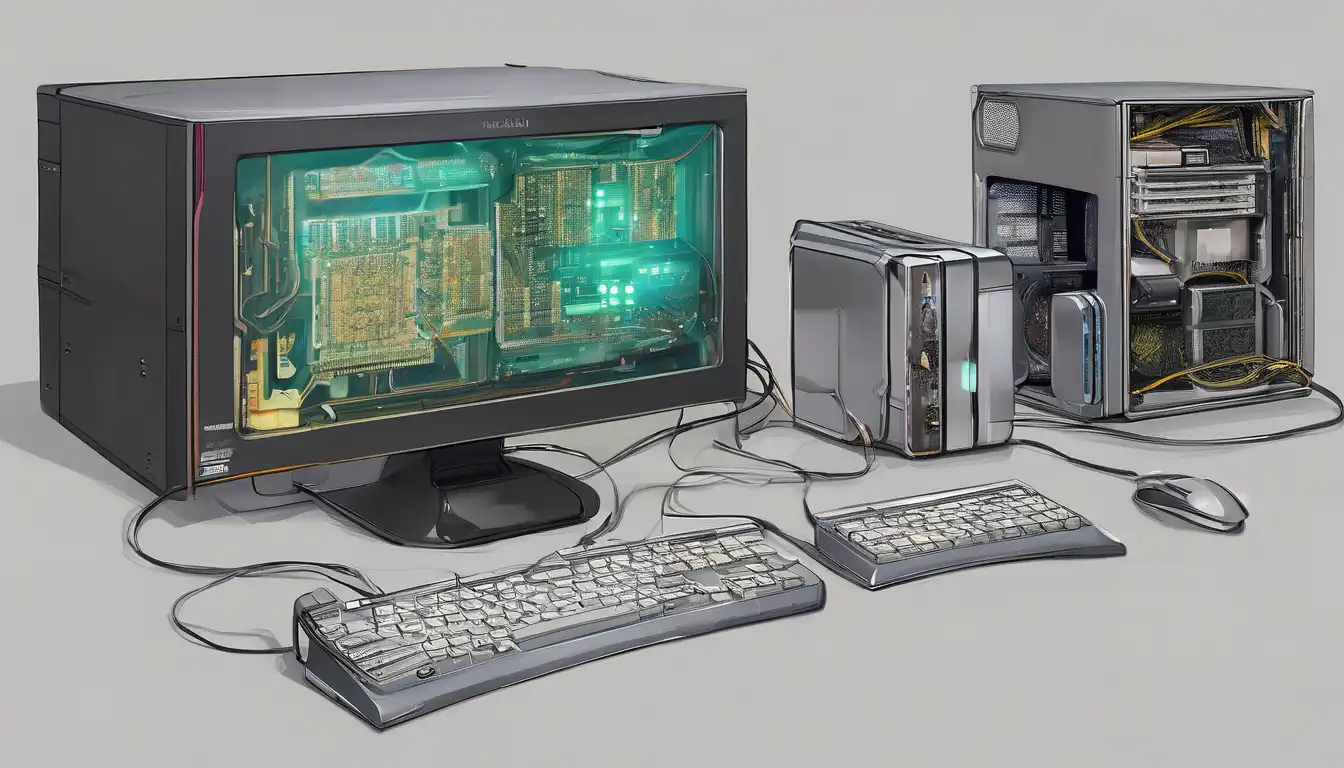Revolutionary Advances in Computer Hardware Technology
The computer hardware landscape is undergoing unprecedented transformation, with innovations emerging at an accelerated pace. From quantum computing breakthroughs to AI-optimized processors, the latest developments are reshaping how we interact with technology. These advancements promise not only enhanced performance but also greater energy efficiency and revolutionary capabilities that were once confined to science fiction.
Next-Generation Processor Architectures
The heart of computing innovation lies in processor technology, where recent developments have pushed boundaries beyond traditional silicon limitations. Chip manufacturers are now integrating artificial intelligence directly into processor designs, creating specialized neural processing units (NPUs) that handle machine learning tasks with remarkable efficiency. These AI-enhanced processors can perform complex computations while consuming significantly less power, making them ideal for both mobile devices and data centers.
Another groundbreaking development involves 3D chip stacking technology, where multiple processor layers are vertically integrated. This approach dramatically increases transistor density without requiring smaller manufacturing processes. The result is processors that deliver superior performance while maintaining thermal efficiency. Companies are also exploring photonic computing, which uses light instead of electricity to transmit data, potentially revolutionizing computing speed and energy consumption.
Memory Technology Evolution
Memory technology has seen remarkable innovations that address the growing demands of modern applications. The latest DDR5 memory standards offer twice the bandwidth of previous generations while operating at lower voltages. This advancement enables faster data transfer rates and improved power efficiency, crucial for high-performance computing and gaming systems. Meanwhile, non-volatile memory express (NVMe) technology continues to evolve, with PCIe 5.0 interfaces delivering unprecedented storage speeds.
Perhaps the most exciting development in memory technology involves persistent memory solutions that bridge the gap between traditional RAM and storage. These technologies allow data to remain accessible even during power interruptions, revolutionizing how systems handle critical operations. The integration of AI-driven memory management systems further optimizes performance by predicting usage patterns and pre-loading frequently accessed data.
Storage Solutions Breakthroughs
Storage technology has transformed dramatically with the advent of quantum storage and advanced solid-state solutions. Modern SSDs now utilize 3D NAND technology with hundreds of layers, significantly increasing storage density while reducing costs. The latest NVMe 2.0 specification introduces enhanced security features and improved thermal management, making high-speed storage more reliable than ever before.
Cloud storage integration has become increasingly sophisticated, with hardware-level encryption and compression technologies ensuring data security while optimizing storage efficiency. The emergence of computational storage drives represents another significant innovation, where storage devices include processing capabilities to perform computations directly on stored data, reducing the need to transfer information to main memory.
Graphics and Display Technology
The graphics processing unit (GPU) market has witnessed revolutionary changes with the introduction of real-time ray tracing and AI-accelerated rendering. Modern GPUs incorporate dedicated tensor cores that dramatically accelerate machine learning applications while delivering photorealistic graphics in gaming and professional visualization. The integration of hardware-accelerated AI upscaling technologies enables higher resolution displays without proportional increases in computational requirements.
Display technology has equally advanced, with microLED and quantum dot displays offering superior color accuracy, brightness, and energy efficiency. These innovations are particularly important for emerging technologies like virtual reality and augmented reality, where display quality directly impacts user experience. The development of flexible and foldable display substrates opens new possibilities for portable computing devices.
Connectivity and Networking Innovations
Hardware connectivity has evolved beyond traditional boundaries with the widespread adoption of Wi-Fi 6E and the impending arrival of Wi-Fi 7. These standards provide significantly higher throughput, lower latency, and improved network efficiency. The integration of 5G modems directly into computing hardware enables seamless always-connected experiences, particularly valuable for mobile professionals and IoT applications.
Thunderbolt 4 and USB4 technologies have standardized high-speed data transfer, video output, and power delivery through single cable solutions. These advancements simplify device connectivity while supporting data transfer rates up to 40 Gbps. The hardware-level implementation of advanced security protocols ensures that these high-speed connections remain protected against emerging threats.
Cooling and Power Management
As hardware components become more powerful, thermal management has emerged as a critical innovation area. Advanced cooling solutions now include vapor chamber technology, liquid cooling systems, and phase-change materials that efficiently dissipate heat from high-performance components. These systems enable sustained peak performance without thermal throttling, essential for gaming, content creation, and scientific computing applications.
Power management has seen equally important advances with the development of more efficient voltage regulation modules (VRMs) and intelligent power distribution systems. These innovations optimize energy usage based on real-time workload demands, significantly extending battery life in mobile devices while reducing energy consumption in desktop systems. The integration of renewable energy monitoring and management capabilities represents another forward-looking development in hardware technology.
Future Directions and Emerging Technologies
The future of computer hardware points toward even more radical innovations, including quantum computing processors that leverage quantum mechanical phenomena to solve problems intractable for classical computers. While still in experimental stages, these technologies promise to revolutionize fields ranging from drug discovery to cryptography. Similarly, neuromorphic computing architectures that mimic the human brain's neural structure offer potential breakthroughs in AI efficiency and capability.
Biocomputing represents another frontier, where biological components integrate with traditional silicon-based systems. This convergence could lead to computers that interface directly with biological systems, opening possibilities for medical applications and enhanced human-computer interaction. As these technologies mature, they will likely redefine the very nature of computing hardware.
The rapid pace of innovation in computer hardware technology ensures that users can expect continuous improvements in performance, efficiency, and capability. Staying informed about these developments helps consumers and professionals make better purchasing decisions and prepare for the technological transformations ahead. For more insights into specific hardware categories, explore our comprehensive guides on processor technology and storage solutions.
